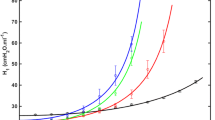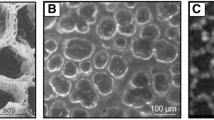Abstract
Acute respiratory distress syndrome (ARDS) has a high mortality rate that is due in part to ventilator-induced lung injury (VILI). Nevertheless, the majority of patients eventually recover, which means that their innate reparative capacities eventually prevail. Since there are currently no medical therapies for ARDS, minimizing its mortality thus amounts to achieving an optimal balance between spontaneous tissue repair versus the generation of VILI. In order to understand this balance better, we developed a mathematical model of the onset and recovery of VILI that incorporates two hypotheses: (1) a novel multi-hit hypothesis of epithelial barrier failure, and (2) a previously articulated rich-get-richer hypothesis of the interaction between atelectrauma and volutrauma. Together, these concepts explain why VILI appears in a normal lung only after an initial latent period of injurious mechanical ventilation. In addition, they provide a mechanistic explanation for the observed synergy between atelectrauma and volutrauma. The model recapitulates the key features of previously published in vitro measurements of barrier function in an epithelial monolayer and in vivo measurements of lung function in mice subjected to injurious mechanical ventilation. This provides a framework for understanding the dynamic balance between factors responsible for the generation of and recovery from VILI.





Similar content being viewed by others
References
Bellani, G., J. G. Laffey, T. Pham, E. Fan, L. Brochard, et al. Epidemiology, patterns of care, and mortality for patients with acute respiratory distress syndrome in intensive care units in 50 countries. JAMA. 315:788–800, 2016.
Matthay, M. A., R. L. Zemans, G. A. Zimmerman, Y. M. Arabi, J. R. Beitler, et al. Acute respiratory distress syndrome. Nat. Rev. Dis. Primers. 5:18, 2019.
Yamaguchi, E., J. Yao, A. Aymond, D. B. Chrisey, G. F. Nieman, et al. Electric cell-substrate impedance sensing (ECIS) as a platform for evaluating barrier-function susceptibility and damage from pulmonary atelectrauma. Biosensors (Basel). 12:390, 2022.
Atwood, K. C., and A. Norman. On the interpretation of multi-hit survival curves. Proc. Natl. Acad. Sci. USA. 35:696–709, 1949.
Seah, A. S., K. A. Grant, M. Aliyeva, G. B. Allen, and J. H. Bates. Quantifying the roles of tidal volume and PEEP in the pathogenesis of ventilator-induced lung injury. Ann. Biomed. Eng. 39:1505–1516, 2011.
Jacob, A. M., and D. P. Gaver 3rd. Atelectrauma disrupts pulmonary epithelial barrier integrity and alters the distribution of tight junction proteins ZO-1 and claudin 4. J. Appl. Physiol. 1985(113):1377–1387, 2012.
Moriondo, A., P. Pelosi, A. Passi, M. Viola, C. Marcozzi, et al. Proteoglycan fragmentation and respiratory mechanics in mechanically ventilated healthy rats. J. Appl. Physiol. 1985(103):747–756, 2007.
Pelosi, P., and P. R. Rocco. Effects of mechanical ventilation on the extracellular matrix. Intensive Care Med. 34:631–639, 2008.
Novak, C., M. N. Ballinger, and S. Ghadiali. Mechanobiology of pulmonary diseases: a review of engineering tools to understand lung mechanotransduction. J. Biomech. Eng. 2021. https://doi.org/10.1115/1.4051118.
Han, B., M. Lodyga, and M. Liu. Ventilator-induced lung injury: role of protein-protein interaction in mechanosensation. Proc. Am. Thorac. Soc. 2:181–187, 2005.
Hamlington, K. L., J. H. T. Bates, G. S. Roy, A. J. Julianelle, C. Charlebois, et al. Alveolar leak develops by a rich-get-richer process in ventilator-induced lung injury. PLoS ONE. 13:e0193934, 2018.
Mori, V., B. J. Smith, B. Suki, and J. H. T. Bates. Linking physiological biomarkers of ventilator-induced lung injury to a rich-get-richer mechanism of injury progression. Ann. Biomed. Eng. 47:638–645, 2019.
Gaver, D. P., 3rd., G. F. Nieman, L. A. Gatto, M. Cereda, N. M. Habashi, and J. H. T. Bates. The POOR Get POORer: a hypothesis for the pathogenesis of ventilator-induced lung injury. Am. J. Respir. Crit. Care Med. 202:1081–1087, 2020.
Beretta, E., F. Romano, G. Sancini, J. B. Grotberg, G. F. Nieman, and G. Miserocchi. Pulmonary interstitial matrix and lung fluid balance from normal to the acutely injured lung. Front Physiol. 12:781874, 2021.
Albert, R. K. The role of ventilation-induced surfactant dysfunction and atelectasis in causing acute respiratory distress syndrome. Am. J. Respir. Crit. Care Med. 185:702–708, 2012.
Gomes, R. F., X. Shen, R. Ramchandani, R. S. Tepper, and J. H. Bates. Comparative respiratory system mechanics in rodents. J. Appl. Physiol. 1985(89):908–916, 2000.
Protti, A., D. T. Andreis, G. E. Iapichino, M. Monti, B. Comini, et al. High positive end-expiratory pressure: only a dam against oedema formation? Crit. Care. 17:R131, 2013.
Bilek, A. M., K. C. Dee, and D. P. Gaver 3rd. Mechanisms of surface-tension-induced epithelial cell damage in a model of pulmonary airway reopening. J. Appl. Physiol. 1985(94):770–783, 2003.
Hussein, O., B. Walters, R. Stroetz, P. Valencia, D. McCall, and R. D. Hubmayr. Biophysical determinants of alveolar epithelial plasma membrane wounding associated with mechanical ventilation. Am. J. Physiol. Lung Cell Mol. Physiol. 305:L478–L484, 2013.
Gaver, D. P., D. Halpern, O. E. Jensen, and J. B. Grotberg. The steady motion of a semi-infinite bubble through a flexible-walled channel. J. Fluid Mech. 319:25–65, 1996.
Higuita-Castro, N., C. Mihai, D. J. Hansford, and S. N. Ghadiali. Influence of airway wall compliance on epithelial cell injury and adhesion during interfacial flows. J. Appl. Physiol. 1985(117):1231–1242, 2014.
Smith, B. J., E. Bartolak-Suki, B. Suki, G. S. Roy, K. L. Hamlington, et al. Linking ventilator injury-induced leak across the blood-gas barrier to derangements in murine lung function. Front Physiol. 8:466, 2017.
Protti, A., M. Cressoni, A. Santini, T. Langer, C. Mietto, et al. Lung stress and strain during mechanical ventilation: any safe threshold? Am. J. Respir. Crit. Care Med. 183:1354–1362, 2011.
Matthay, M. A. Resolution of pulmonary edema. Thirty years of progress. Am. J. Respir. Crit. Care Med. 189:1301–1308, 2014.
Smith, B. J., K. A. Grant, and J. H. Bates. Linking the development of ventilator-induced injury to mechanical function in the lung. Ann. Biomed. Eng. 41:527–536, 2013.
Bastarache, J. A., T. Ong, M. A. Matthay, and L. B. Ware. Alveolar fluid clearance is faster in women with acute lung injury compared to men. J. Crit. Care. 26:249–256, 2011.
Gajic, O., J. Lee, C. H. Doerr, J. C. Berrios, J. L. Myers, and R. D. Hubmayr. Ventilator-induced cell wounding and repair in the intact lung. Am. J. Respir. Crit. Care Med. 167:1057–1063, 2003.
Gill, S. E., C. M. Yamashita, and R. A. Veldhuizen. Lung remodeling associated with recovery from acute lung injury. Cell Tissue Res. 367:495–509, 2017.
Folkesson, H. G., and M. A. Matthay. Alveolar epithelial ion and fluid transport: recent progress. Am. J. Respir. Cell Mol. Biol. 35:10–19, 2006.
Zanirati, G., L. Provenzi, L. L. Libermann, S. C. Bizotto, I. M. Ghilardi, et al. Stem cell-based therapy for COVID-19 and ARDS: a systematic review. NPJ Regen. Med. 6:73, 2021.
Gattinoni, L., E. Carlesso, P. Cadringher, F. Valenza, F. Vagginelli, and D. Chiumello. Physical and biological triggers of ventilator-induced lung injury and its prevention. Eur. Respir. J. Suppl. 47:15s–25s, 2003.
Hamlington, K. L., B. Ma, B. J. Smith, and J. H. Bates. Modeling the progression of epithelial leak caused by overdistension. Cell Mol. Bioeng. 9:151–161, 2016.
Ghadiali, S., and D. P. Gaver. The influence of non-equilibrium surfactant dynamics on the flow of a semi-infinite bubble in a rigid cylindrical capillary tube. J. Fluid Mech. 478:165–196, 2003.
Acknowledgements
This work was supported by NIH Grant HL142702 and W81XWH-20-1-0696.
Funding
Funding was provided by Center for Scientific Review (Grant No. HL142702).
Author information
Authors and Affiliations
Contributions
Study concept and design: JHTB. Drafting of Manuscript: JHTB. Critical Revisions of Manuscript: DPG, MK-S, GFN. Statistical Analysis: JHTB. Obtaining Funding: GFN, DPG, JHTB.
Corresponding author
Ethics declarations
Competing Interests
JHTB is a member of the advisory board and shareholder in Oscillavent, LLC. He is also a consultant for Respirator Sciences LLC and is co-applicant on patent Application WO2015127377 A1 (filed Feb 23, 2014) and International application no. PCT/US21/24537 (filed March 2, 2021). GFN has an Unconditional Education Grant from Drager Medical. GFN and MKS have lectured for Intensive Care On-line Network, Inc. (ICON). MKS has received an educational research grant from Dräger Medical Systems, Inc. The authors maintain that industry had no role in the design and conduct of the study; the collection, management, analysis, or interpretation of the data; nor the preparation, review, or approval of the manuscript.
Additional information
Associate Editor Chiara Bellini oversaw the review of this article.
Publisher's Note
Springer Nature remains neutral with regard to jurisdictional claims in published maps and institutional affiliations.
Rights and permissions
Springer Nature or its licensor (e.g. a society or other partner) holds exclusive rights to this article under a publishing agreement with the author(s) or other rightsholder(s); author self-archiving of the accepted manuscript version of this article is solely governed by the terms of such publishing agreement and applicable law.
About this article
Cite this article
Bates, J.H.T., Nieman, G.F., Kollisch-Singule, M. et al. Ventilator-Induced Lung Injury as a Dynamic Balance Between Epithelial Cell Damage and Recovery. Ann Biomed Eng 51, 1052–1062 (2023). https://doi.org/10.1007/s10439-023-03186-1
Received:
Accepted:
Published:
Issue Date:
DOI: https://doi.org/10.1007/s10439-023-03186-1




